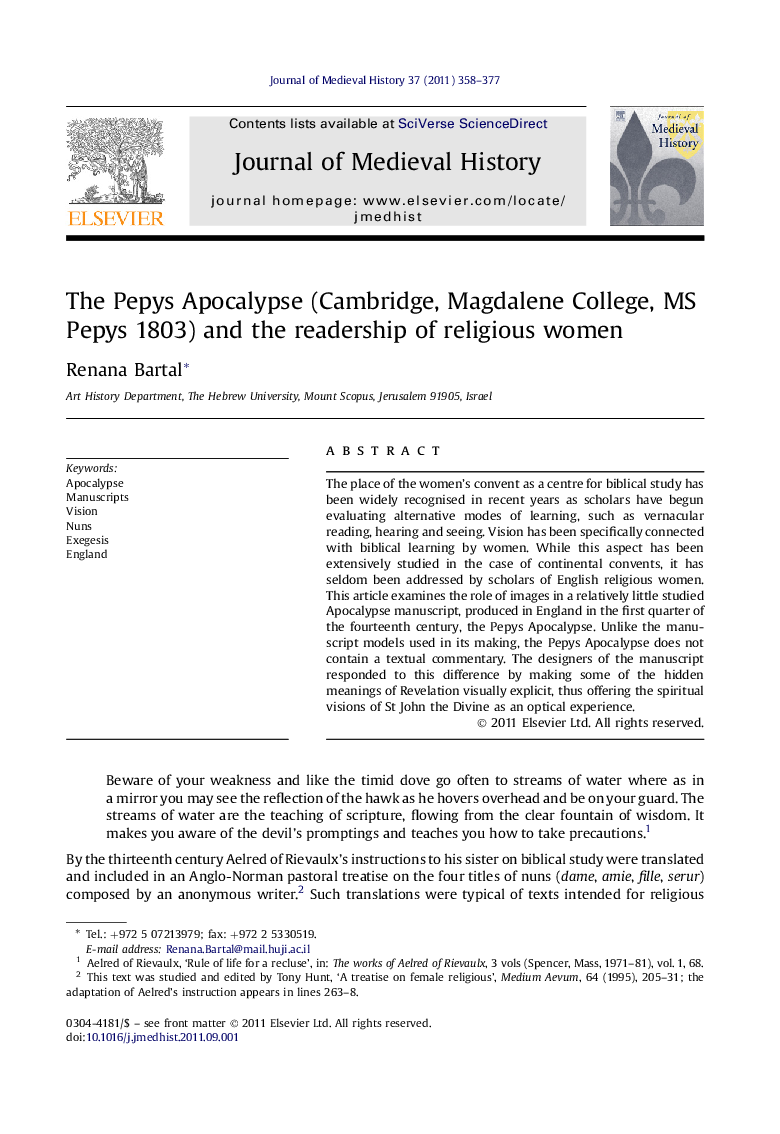| Article ID | Journal | Published Year | Pages | File Type |
|---|---|---|---|---|
| 1160066 | Journal of Medieval History | 2011 | 20 Pages |
The place of the women’s convent as a centre for biblical study has been widely recognised in recent years as scholars have begun evaluating alternative modes of learning, such as vernacular reading, hearing and seeing. Vision has been specifically connected with biblical learning by women. While this aspect has been extensively studied in the case of continental convents, it has seldom been addressed by scholars of English religious women. This article examines the role of images in a relatively little studied Apocalypse manuscript, produced in England in the first quarter of the fourteenth century, the Pepys Apocalypse. Unlike the manuscript models used in its making, the Pepys Apocalypse does not contain a textual commentary. The designers of the manuscript responded to this difference by making some of the hidden meanings of Revelation visually explicit, thus offering the spiritual visions of St John the Divine as an optical experience.
► The importance of images for English religious women. ► The role of images in an unglossed, fourteenth-century Apocalypse manuscript. ► Some exegetical meanings made visually explicit by the illuminator. ► Enhanced role of images as vehicles for scriptural contemplation by women.
